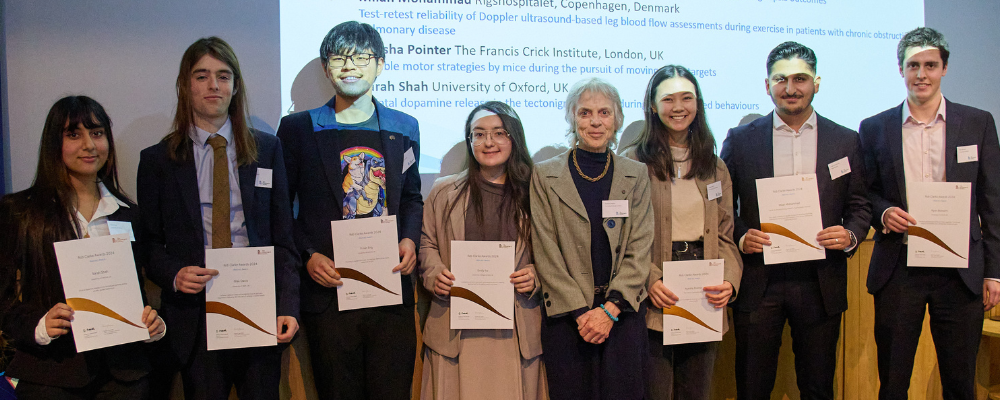
Voice of the Editor
Professor Kim E. Barrett, Editor-in-Chief of The Journal of Physiology
“When I was invited to submit this short column1 shortly after the start of the New Year, I had little insight into what lay ahead. But what a difference a few weeks have made. The disruptions to many aspects of life in the United States is of course more than troubling overall, but nothing is striking me more deeply than the upheavals proposed for scientific research.”

When I was invited to submit this short column1 shortly after the start of the New Year, I had little insight into what lay ahead. But what a difference a few weeks have made. The disruptions to many aspects of life in the United States is of course more than troubling overall, but nothing is striking me more deeply than the upheavals proposed for scientific research.
The largest funder of biomedical, and thus physiological, research in the US is the National Institutes of Health (NIH). That likely makes it the most important source of funding for physiology in the world. As of this writing (26 February, 2025), the agency appears to be almost entirely paralysed. An initial “pause” on communications, by itself not unusual when there is a change in administration, was accompanied by abruptly cancelled grant review panels, sometimes when scientists had already begun their travel for the meetings. Council meetings, where final funding decisions are made, were also paused, along with a freeze in the award of any grants, or payments on grants already awarded.
Two additional developments further rocked the scientific ecosystem. First, the President issued an Executive Order banning any government activities that would support diversity, equity and inclusion. Second, the NIH issued supplemental guidance on a Friday evening that, effective essentially immediately, would limit the amount of facilities and administrative costs (F&A) to only 15% of direct costs not only for new grants, but also for ongoing payments for grants already awarded. F&A payments allow universities to establish the infrastructure needed for research as well as the personnel that (for example) manage accounts and ensure compliance with research mandates, such as human and animal subjects protections. Imagine running a physiology lab with staff, reagents and animals available, but no electricity nor freezers nor vivaria nor IACUC nor software nor administrative support to provide insight into your grant balances. My institution is part of the University of California (UC), which collectively is the largest recipient of NIH funding in the US. It has been estimated that UC will lose at least $800M per year if the administration’s proposal to reduce F&A awards is fully implemented.
In response to legal actions by organisations and states affected by these executive actions, courts have temporarily enjoined the imposition of these changes, but the long-term prospect is unclear. And even while a judge has ordered the government to begin grant making again, the NIH appears to be exploiting a loophole to suspend review panels and council meetings. In an otherwise admirable effort to increase government transparency, these groups cannot meet unless the public is notified of their meetings at least 15 days before they occur. The NIH has simply halted publishing such notices in the Federal Register.
The consequences of these actions are also already being felt. Institutions have moved to pause or rescind offers for PhD admissions for the fall. Early career investigators, who may have spent years gathering the preliminary data for a competitive grant proposal, are seeing their research plans left in limbo, and are considering whether a research career is viable. Institutions are weighing tough choices in deciding whether, if at all, they can fund the infrastructure needed for state-of-the-art research. And those traditionally underrepresented in the biomedical workforce are seeing, once again, that the system may be stacked against them.
I recognise that The Journal of Physiology is a UK-based, international venue for the publication of the best physiological research, and that many if not most of the readers of this message are based outside the United States. But the US has long been the primary source of both submissions and research papers for The Journal, and any reduction in US research output could hurt not only The Journal’s viability, but also that of The Physiological Society. In addition, many of our readers and authors have robust collaborations that span across countries and time zones, and the international mobility of scientists means that US-trained investigators are a critical component of the research enterprise in many countries. Indeed, had my life taken a different turn, I would have returned to the UK after my postdoctoral training in the US, adding new expertise and experiences to strengthen the system. It therefore falls on all of us to push back where we can when research is threatened, and also to explain the value of investing in biomedical research to our families, friends and neighbours, especially in terms of new treatments and cures. Those of us in the US hope we can count on this worldwide support.
1Please note that I am writing this column as Editor-in-Chief of The Journal of Physiology, and in my personal capacity. It should not be interpreted to represent the position of the University of California, Davis, nor that of the University of California system.



